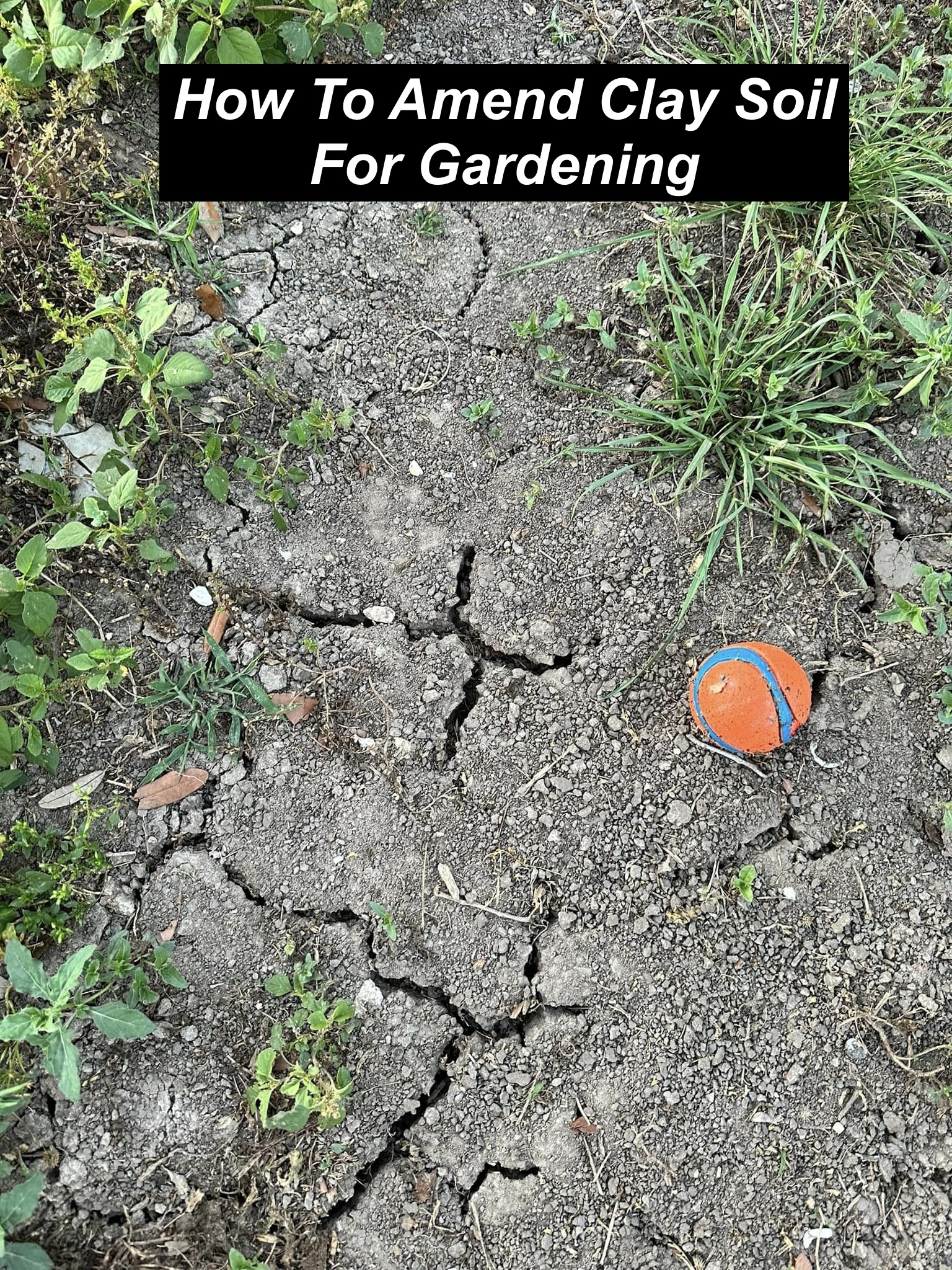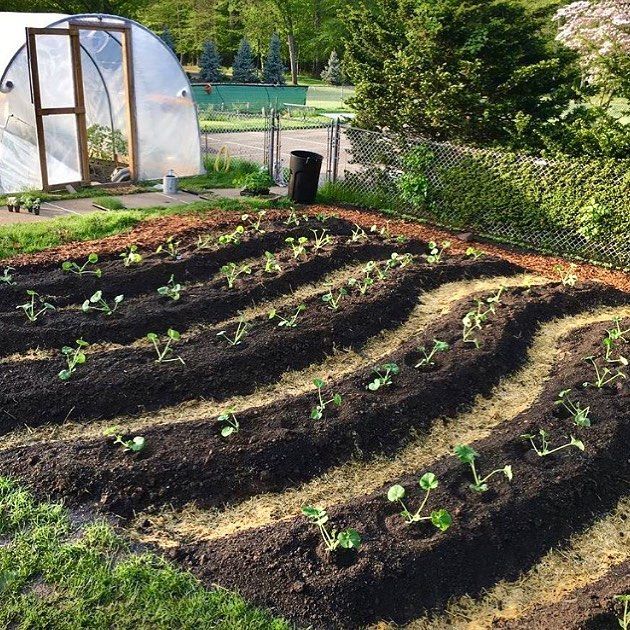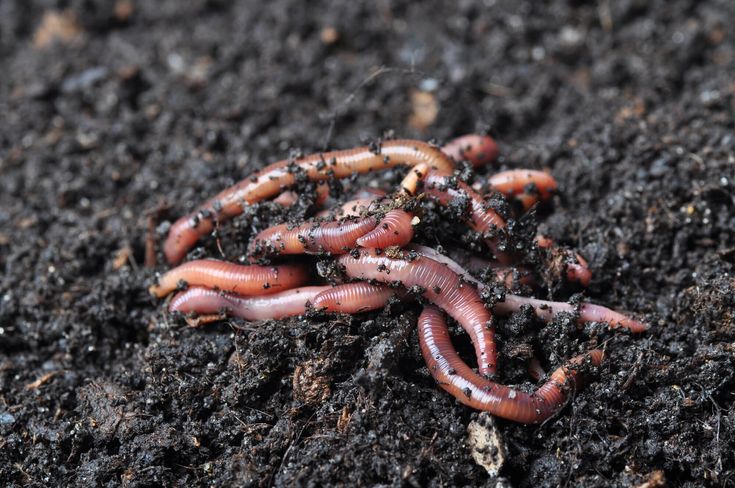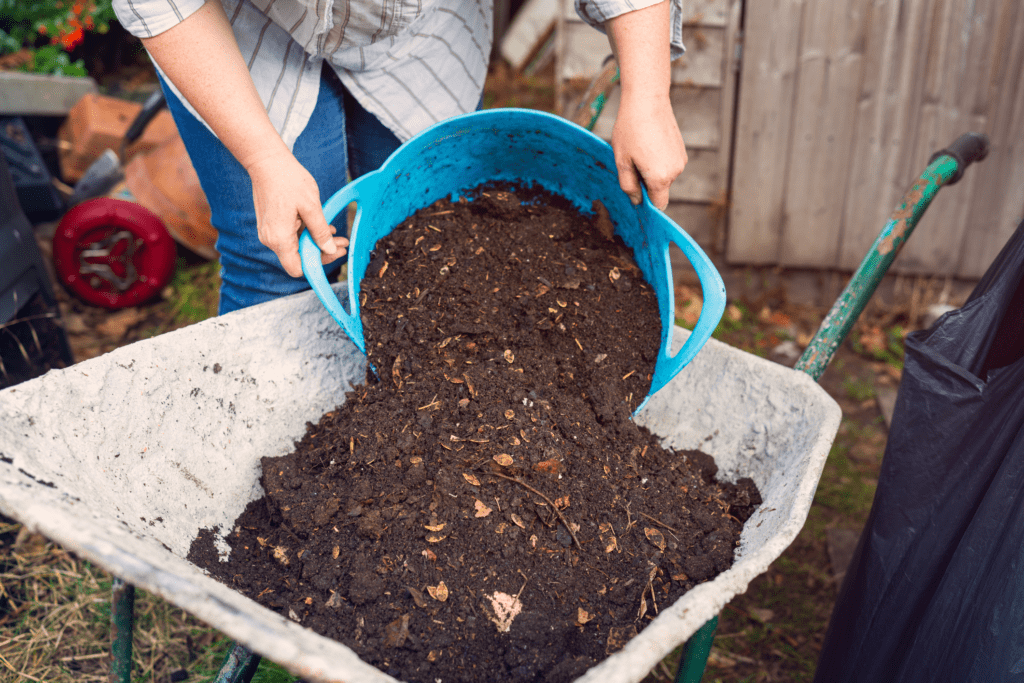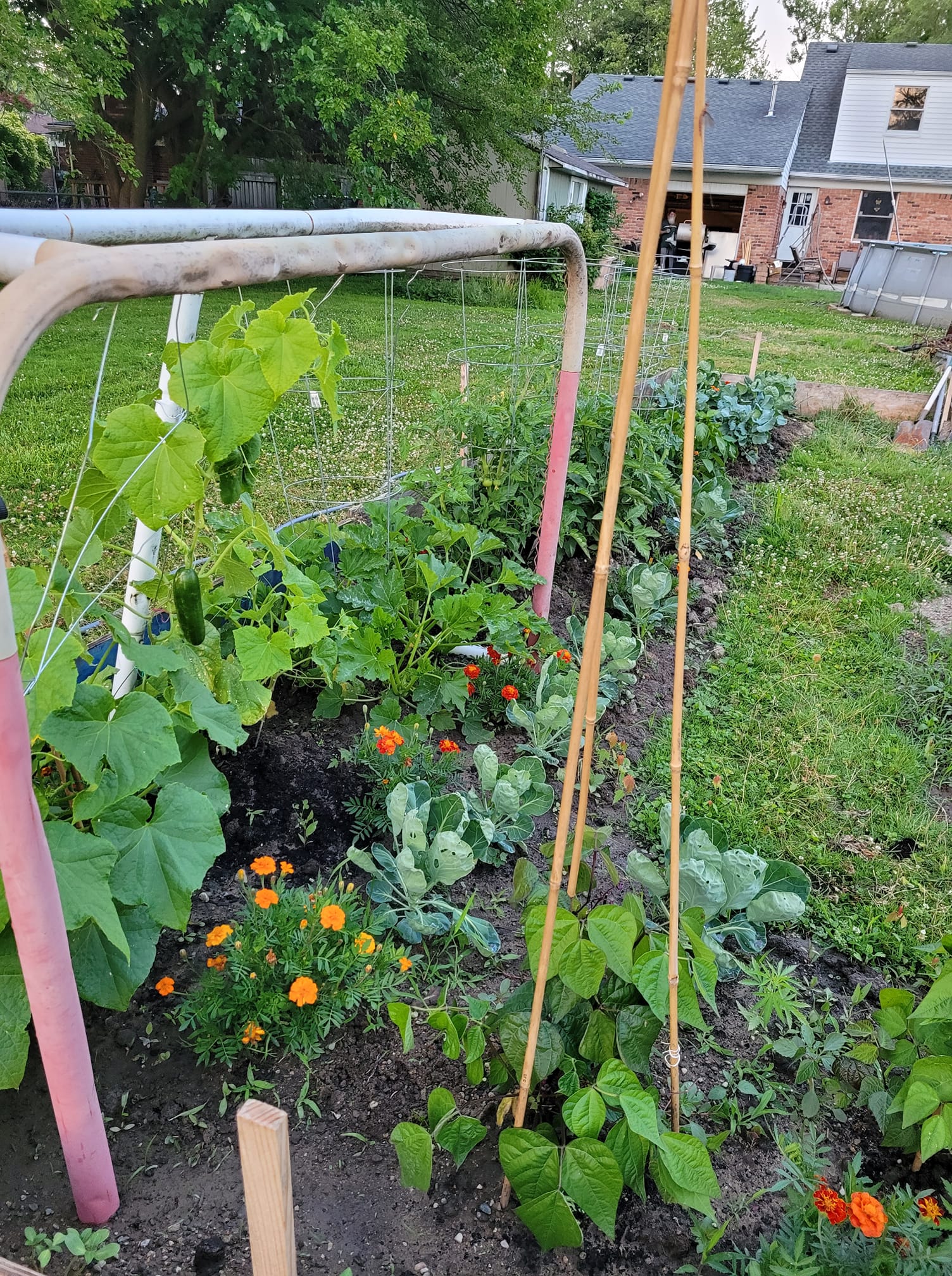The right soil composition is fundamental to gardening. Unfortunately, not all areas have that fertile soil that has good drainage. Are you unfortunate to have a garden with clay soil?
The bad news is gardening in this heavy, compact soil is challenging. However, the upside is this problem isn’t unique, as many gardeners face it.
Also, you can fix the issue by amending the soil, thus transforming it into a fertile and productive environment for your plants. Typically, amending clay soil involves improving its structure, drainage, and nutrient content.
Below is how to do so.
How To Amend Clay Soil For Gardening
1. Test The Soil
The first step in improving clay soil is to assess its composition and pH level. Collect, combine, and thoroughly mix samples of soil from different garden parts.
Get a soil test kit, and then follow the instructions provided to determine the soil’s pH level, nutrient content, structure, and texture. Also, test the soil texture by rolling moist soil from your garden into a ball. Clay soil will form a smooth, sticky ball that holds its shape.
As for testing the structure, examine the soil’s aggregation, pore spaces, and compaction level. Healthy soil has well-defined aggregates, adequate pore spaces for air and water movement, and minimal compaction.
Testing your garden soil will help you determine any deficiencies that need addressing.
Read More:
- Natural Homemade Fertilizers For Plants
- How To Use Banana Peel Water For Plants
- How To Use Eggshells In Your Garden
- Best Vegetables For Container Gardening
2. Contour Your Garden
Shaping your garden to follow natural contours or creating terraces, berms, or raised beds helps manage water flow, prevents erosion, and optimizes growing conditions. The gentle slopes you create from contouring facilitate proper water flow, preventing pooling or runoff.
Furthermore, terraces, berms, or contour lines stabilize the soil and reduce erosion. Contouring is essential to combat drainage issues and gravity when working on a garden with clay soil since this soil type gets compacted easily.
3. Aerate The Soil
Since clay soil is typically dense and compact, it restricts airflow, water infiltration, and root development, which isn’t good for plant growth. Fix this through soil aeration. This will give it pore spaces, facilitating more effective water, nutrients, and air penetration.
Aerate clay soil to a depth of at least 6 to 12 inches to ensure you break up all the compacted layers. To ensure your garden continues to support plants, aerate it twice- in fall and spring. You can fight soil compaction with a core aerator, spading fork, or garden tiller.
Alternatively, grow clay-busting plants; their roots will penetrate the soil, thus loosening, aerating, and enriching the soil. Below are the plants to consider:
- Deep-rooted perennials like coneflowers, comfrey, yarrow, and red clover.
- Cover crops like buckwheat, clover, and winter rye.
- Trees and shrubs such as poplar, alder, and willow, alder.
- Grasses like switchgrass and big bluestem.
- Deep-rooted vegetables such as carrots and radishes.
4. Add The Right Soil Amendments
After aerating your garden, introduce the ideal soil amendments. Below are the different soil amendments suitable for clay soil:
a) Organic Matter
Initially, you will require plenty of organic matter to really alter the clay soil’s structure. It serves as a soil conditioner, aiding in breaking up clay particles. As organic matter decomposes, it forms aggregates that form pore spaces, leading to better root growth and water infiltration.
Organic materials also give the soil a nutrient boost as they decompose. In addition, organic matter improves the soil’s water retention and drainage characteristics by making the ground porous.
Moreover, organic matter provides a habitat and food to earthworms, fungi, and bacteria to beneficial organisms. These microorganisms foster a thriving microbial community that elevates soil resilience and fertility.
Incorporate organic matter into your garden soil generously. Work it in thoroughly to at least 6-12 inches deep to ensure you distribute it evenly and effectively throughout the soil profile.
Organic matter is typically made of animal and plant material. Excellent choices include aged manure, compost, kitchen straps, peat moss, straw, grass clippings, and leaf mold.
b) Gypsum
This is an excellent soil amendment for relieving compaction and boosting soil structure in an existing garden. Evenly spread granular or powdered gypsum over the soil surface and till or mix it into the soil.
Gypsum causes clay particles to aggregate or clump together, creating larger particles and pore spaces in the soil. This loosens compacted soil, aiding the establishment of healthy roots and water and nutrient access.
Also, gypsum adds calcium to the soil without affecting its pH, so adding this substance during planting helps fruits ripen without suffering end root.
c) Worms
Worms, particularly earthworms, do an excellent job of breaking up soil. These microorganisms burrow through the soil, creating channels and tunnels that help to aerate and loosen compacted clay soil. Their movements create pathways for air, water, and plant roots, promoting better soil structure and drainage.
Soil with worms is considered healthy. Their abundance and activity in the soil indicate good soil structure, adequate moisture levels, and sufficient organic matter.
While worms are beneficial, you cannot simply dump them into your garden. First, foster a suitable environment that allows microorganisms to thrive. Also, regularly add compost or mulch to your garden beds to provide food for worms and create a hospitable environment for them.
Moreover, keep your garden soil consistently moist, especially during dry periods, and avoid using pesticides, herbicides, and synthetic fertilizers.
d) Perlite
Another worthy soil amendment for clay soil is perlite, a lightweight, porous volcanic soil. When mixed into clay soil, perlite helps create pore spaces between soil particles, allowing for better airflow to plant roots and beneficial soil microorganisms.
Additionally, as perlite particles intermix with clay soil, they break up compacted layers. It is also easier to cultivate, plant, and maintain garden beds after adding perlite since this material reduces clay soil’s overall weight and density, making it more friable and crumbly.
5. Apply Organic Mulch
Leaving soil bare invites compaction, so lay mulch if you don’t plan to grow cover crops in your garden after aerating and introducing amendments. An appropriate mulch will do wonders for your garden. For instance, it will keep your garden soil from losing moisture, control weeds, stabilize the soil, and improve structure.
There are numerous materials you can use as mulch, some of which are readily available in your home. Shredded leaves are a favorite of mine. They will feed your soil quite well.
You can also opt for straw, but beware of where you source it as it might contain herbicides. Ask the owner just to be sure. Bark mulch, wood chips, and alfalfa hay are also suitable options.
Apply more mulch when dry than you would during rainy seasons. But don’t use too much because this could cause moisture retention, soil compaction, and root suffocation.
6. Minimize Foot Traffic
Transforming a garden with clay soil into one that can support life isn’t a mean feat. It requires dedication, proper strategy, and patience. So, after all the effort you’ve put into amending your garden, the last thing you want is to subject your garden to heavy traffic, making it compact all over again.
Apart from causing compaction, heavy traffic can also disrupt soil organisms’ habitats and activities, leading to a decline in soil health and fertility.
How can you minimize heavy foot traffic in your garden?
- Designate pathways or access routes to garden beds or growing areas.
- Install stepping stones, mulched paths, or raised beds to provide stable footing and reduce soil compaction in high-traffic areas.
- Plan garden layout and plant spacing appropriately to maximize accessibility.
How To Garden With Clay Soil
Amending the soil is an important aspect when preparing clay soil for gardening. But that’s not all; below are other helpful tips.
a) Construct Raised Beds
Some plants thrive more in clay soil compared to others. This approach allows you to develop ideal growing areas filled with a mixture of topsoil, compost, and other organic materials.
Position your raised beds in areas with sufficient sunlight and avoid areas prone to waterlogging or where water accumulates.
b) Choose The Right Plants
Some plants thrive more in clay soil compared to others. Many native plants and varieties of perennials, shrubs, vines, annuals, vegetables, bulbs, herbs, and trees thrive in clay soil.
d) Avoid Working On Your Garden When Wet
Wet clay soil is susceptible to compaction when disturbed, so wait until the soil is moist but not waterlogged before working on your garden.
e) Work With The Seasons
Seasons will guide you into successful gardening. For instance, soil preparation is best done in early spring when the soil is moist, while fall is great for planting trees, shrubs, and perennials.
f) Water Appropriately
Clay soil holds water tightly, so water it less frequently. Before watering your garden, ensure the soil is moderately dry.
Concluding Thoughts
There are easier and better soil types for gardening than clay soil, but don’t let the challenges this soil presents deter you from creating a flourishing garden. Amending clay soil helps change it into fertile ground capable of supporting healthy plant life. However, remember that you cannot transform clay soil in one gardening season. This process requires persistence and patience.

Hey there, fellow plant enthusiasts! I’m Rachel, the green-thumbed writer behind Rooted In Garden. With a deep-rooted love for all things botanical, I’ve made it my mission to help you cultivate a thriving collection of houseplants. As a devoted plant parent myself, I understand the joys and challenges that come with nurturing these leafy wonders. Whether you’re a succulent aficionado, an orchid enthusiast, or simply adore all potted flora, join me on this journey as we explore the secrets to growing and caring for our beloved green companions. Together, let’s create a flourishing oasis indoors.

